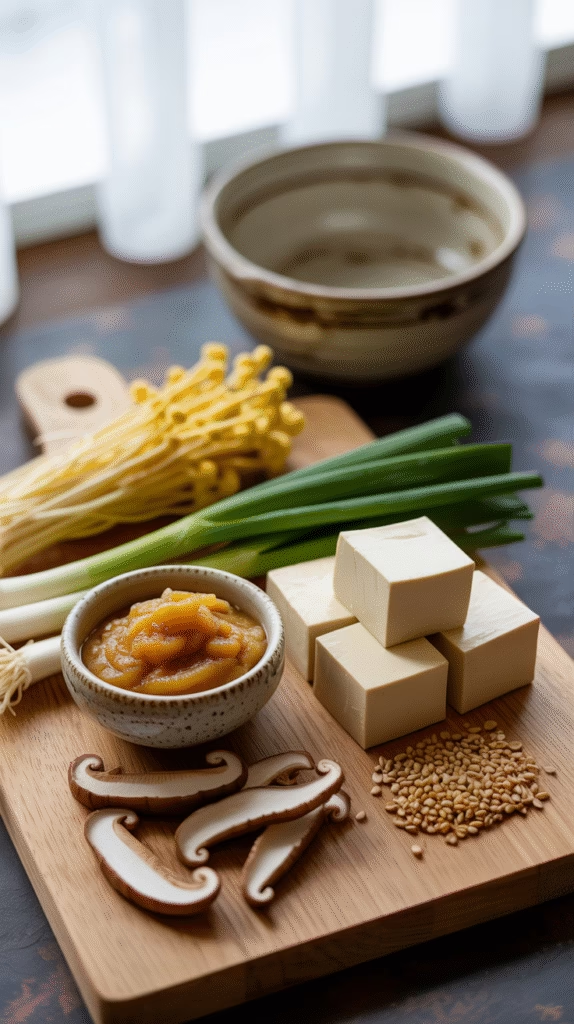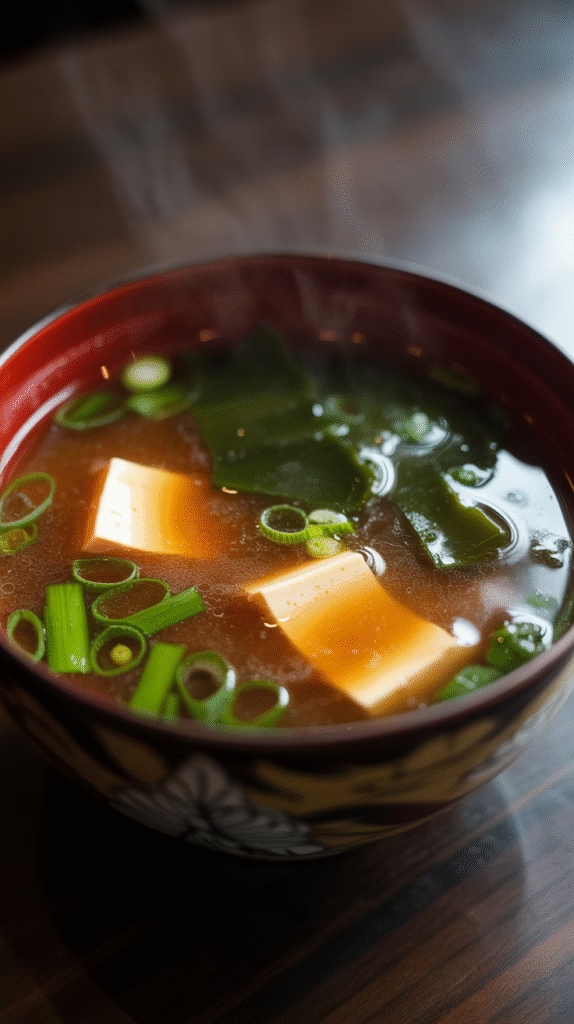Think of walking into a Japanese restaurant and inhaling the aroma wafting from the kitchen: it’s miso soup time! I have perfected this recipe for years now, and once you get the hang of it, you will wonder why you ever reached for those pitiful instant packets. But Why Miso Soup Deserves a Spot in Your Weekly RotationMiso soup is not some passing fad; it has been eaten by Japanese families for generations, and there’s a good reason: It is truly more than just a meal — it’s a symphony of umami that can make your day better. So why do you feel so full after a bowl? It’s because miso paste contains probiotics to aid in gut health and amino acids that your body needs. In other words, it’s liquid therapy.
The Secret Nobody Tells You About Authentic Miso Soup
Here’s where most people mess up – they think miso soup is just miso paste + hot water. Wrong. The foundation of any respectable miso soup is dashi, a delicate broth that brings depth and complexity to every spoonful. Skip this step, and you’re basically making expensive salt water.
I learned this the hard way during my first attempt. Mixed some miso paste with boiling water, tossed in some tofu, and wondered why it tasted like disappointment. Don’t be me from five years ago.

Essential Ingredients That Make or Break Your Soup
Your Miso Paste Arsenal
Not all miso pastes are created equal, and honestly, the variety can be overwhelming. Let me break it down for you:
White Miso (Shiro Miso)
- Mild and slightly sweet
- Perfect for beginners
- Great for lighter, everyday soups
Red Miso (Aka Miso)
- Rich and robust flavor
- Aged longer for deeper complexity
- My personal go-to for hearty winter bowls
Mixed Miso
- Best of both worlds
- Balanced flavor profile
- Safe choice when you can’t decide
The Dashi Dilemma: Homemade vs. Instant
Look, I get it. Making dashi from scratch sounds intimidating, but hear me out. Homemade dashi takes your soup from “meh” to “holy cow, did you really make this?” However, I’m not going to judge you for using instant – life’s too short, and sometimes convenience wins.
For homemade dashi, you’ll need:
- Kombu (dried kelp)
- Bonito flakes (katsuobushi)
- Filtered water
For the instant route:
- Quality dashi powder or granules
- Just add hot water and you’re golden
The Supporting Cast
Tofu – Go for silken if you want it to practically melt in your mouth, or firm if you prefer some texture. I usually cube it small because nobody wants massive tofu chunks disrupting their zen moment.
Wakame Seaweed – This stuff expands like crazy when rehydrated, so a little goes a long way. Don’t dump half the package in like I did on my second attempt 🙂
Green Onions (Scallions) – Fresh, bright, and absolutely essential for that final pop of color and flavor.

The Step-by-Step Magic (That Actually Works)
Preparing Your Dashi Base
If you’re going homemade, here’s the deal:
- Soak kombu in cold water for 30 minutes (or overnight if you’re a planner like that)
- Heat gently – don’t let it boil or you’ll extract bitter compounds
- Remove kombu just before boiling point
- Add bonito flakes and simmer for 2-3 minutes
- Strain immediately through fine mesh
The whole process takes about 45 minutes, but most of that is passive waiting time. Perfect for meal prep Sundays.
The Miso Mixing Technique
This is where people royally screw up. Never add miso paste directly to boiling liquid – you’ll kill the beneficial bacteria and create lumpy, sad soup.
Here’s my foolproof method:
- Remove a small amount of warm dashi (about 1/4 cup)
- Whisk miso paste into this small portion until completely smooth
- Gradually add this mixture back to the main pot
- Heat gently – never let it boil after adding miso
Assembly Time
Heat your dashi to just below simmering. Add your prepared tofu cubes and rehydrated wakame. Let them warm through for about 2 minutes. Then comes the miso integration – follow my mixing technique above, and you’re golden.
Garnish with sliced green onions right before serving. This isn’t optional – the fresh bite cuts through the rich umami and makes everything pop.
Troubleshooting Common Miso Soup Disasters
“My Soup Tastes Like Salt Water”
You probably skipped the dashi or used too much miso paste. Start with less miso than you think you need – you can always add more, but you can’t take it back.
“Everything’s Floating and Lumpy”
Classic miso mixing fail. The paste needs to be completely dissolved in warm liquid before joining the party. No shortcuts here.
“It’s Too Fishy”
Your dashi is overpowering the miso. Try using less bonito flakes or switch to a kombu-only dashi for a more vegetarian-friendly base.
Beyond Basic: Elevating Your Miso Game
Seasonal Variations That Actually Matter
Spring: Add fresh peas and bamboo shoots Summer: Incorporate corn kernels and fresh herbs Fall: Throw in mushrooms and root vegetables Winter: Go heavy with hearty additions like daikon radish
Protein Upgrades
IMO, basic miso soup is great, but sometimes you want more substance:
- Clams for a briny ocean vibe
- Thinly sliced pork for richness
- Soft-poiled egg for pure comfort
- Shrimp for elegant dinner party vibes
The Real Talk on Timing and Storage
Fresh miso soup is always best, but I’m realistic about busy schedules. You can prep components ahead:
- Dashi keeps in the fridge for 3-4 days
- Miso paste mixture can be prepared in advance
- Toppings should be added fresh for best texture
Never freeze completed miso soup – the texture goes completely wonky. Trust me on this one.

Why Your Gut (And Taste Buds) Will Thank You
Beyond the obvious deliciousness factor, miso soup delivers serious nutritional benefits. We’re talking protein, vitamins, minerals, and those gut-friendly probiotics. It’s like a daily vitamin that actually tastes incredible.
I’ve made this soup probably hundreds of times now, and it never gets old. There’s something deeply satisfying about creating this perfect balance of flavors from such simple ingredients. Whether you’re fighting off a cold, need comfort food, or just want to impress someone with your culinary skills, this recipe delivers every single time.
So grab your whisk, hunt down some quality miso paste, and get ready to transform your kitchen into your new favorite Japanese restaurant. Your future self will thank you – probably while slurping contentedly from a steaming bowl.
Ready to become the miso soup master in your household? Start with this basic recipe, then let your creativity run wild. After all, the best part about cooking is making it your own.



